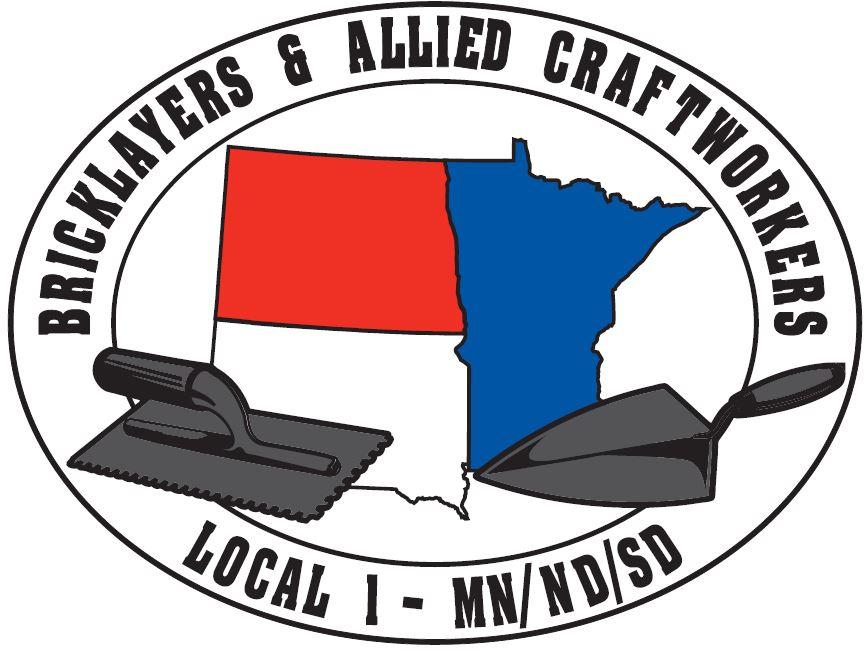
At 5-feet five-inches and a self-described “girly-girl” who had no construction experience, Amanda McRae is getting used to people not believing her when she says, “I’m a bricklayer.”
There’s awkward or amused pause as they seem to wait for a “Just kidding.”
For those who think she couldn’t or wouldn’t become a bricklayer, she takes pride in showing the hard-hatted jobsite photos. It proves she’s stuck with it through cold days, long, back-aching shifts and shown up early day after day. She’s now wrapping up her third year in the Bricklayers and Allied Craftworkers Local 1 Minnesota/North Dakota/South Dakota Registered Apprenticeship program.
“If I can do it, anyone can do it,” says the mom of two daughters and a son ages 12, 9 and 6.
It isn’t easy work by any means. She’s had to lean on friends and family to help with the kids. And she’s shed a few tears in the privacy of her car after physically and mentally exhausting days that might stretch to 17 hours when she has a long work commute, afternoon and evening registered apprenticeship (RA) classes at the Bricklayers and Allied Craftworkers training center in New Hope, and then heads home after dark.
She is focused and moves forward with inner strength, resilience and determination. She worked almost 10 years as a certified nursing assistant with end-of-life dementia patients. She also lost a younger brother to suicide and is raising her kids on her own.
The desire to provide more for her children and the encouragement of friends who were in the trades led her to visit the Bricklayers and Allied Craftworkers training center. She was thinking about specializing in caulking, but she met the union president and had a job within two weeks as a bricklayer.
As registered bricklayer apprentice, she is required to attend training for 144 hours per year for three years and accumulate 6,000 hours of on-the-job training.
Attributes that assist registered apprentices to have a successful journey through their program are a willingness to learn, a strong work ethic and dependability. Dependability is a critical factor when working efficiently, and in unison as a team. It is essential to the integrity of work and safety of others on the project.
Other skills, such as reading blueprints, calculating measurements, learning how trowel mortar and grout work, working with a jobsite foreman and more, can be learned through the related technical instruction taught at the training center, workshops and the on-the-job training. The Bricklayers and Allied Craftworkers training center also offer a six-week pre-apprenticeship program to introduce basic skills each spring.
McRae had no experience in the construction industry when she signed up, so that meant a steep learning curve. She started with beginning skills ranging from properly swinging a hammer, to working safely on scaffolding. Then progressed to the more complex work of figuring out precise calculations for building a wall and making sure measurements were accurate for electricians and other tradespeople that follow the bricklaying team.
McRae’s first foreman, Dan Heiland at Magney Construction, was encouraging when she’d feel overwhelmed, and she learned to speak up when she needed help. Heiland would take photos that documented her progress and new skills. “That made me want to keep sticking with it and to keep pushing through,” McRae said. “I proved to myself, ‘I can do this.’”
Her most physically demanding job so far has been building 100-foot walls for a new Metro Transit bus garage in north Minneapolis. It required stacking 12-inch blocks heavy-duty enough to resist a fire for three hours. Sometimes co-workers will check to make sure she can handle the height of a wall given her smaller statue. While it has been the toughest job so far, it was also one that allowed her to learn many new skills.
McRae finds working with grout to be satisfying, as well as the day-to-day variety of work. She might be adding decorative stone to beautify a public building or busting out old walls for a university renovation.
She hopes to work as a union representative someday, but for now, she’s dialed in being among the handful of women busting bricklayer stereotypes as she finishes her last registered apprenticeship classes and completes her on-the-job hours to advance to a journeyworker bricklayer.
The first year is the toughest, but then skills begin to click and a camaraderie builds among co-workers and other apprentices, McRae said.
She enjoys pointing out to her kids the buildings she has worked on when they drive through the Twin Cities. On a late-winter Friday, she was heading to her kids’ school where her son was going to be in a classroom circus. He’s one of the smaller kids, but he was portraying the circus strong man—possibly mimicking his mom.
“He wants to be a bricklayer,” she said.
To view the complete article in the Department of Labor and Industry's Apprentice Works Spring 2022 newsletter click here:
DLI APPRENTICE WORKS SPRING 2022 NEWSLETTER
